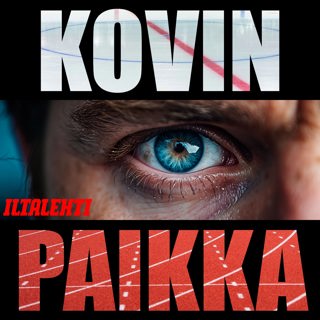
The Billionaires Playboy Club: A Memoir By Virginia Roberts (Chapter 15 Part 2 Chapter 16 Part 1 ) (11/2/25)
Virginia Roberts Giuffre’s unpublished memoir The Billionaire’s Playboy Club recounts her recruitment into Jeffrey Epstein’s world as a 16-year-old working at Mar-a-Lago, where she says Ghislaine Maxwell lured her in with promises of opportunity and travel. The manuscript describes how she became trapped in Epstein’s orbit, allegedly forced into sexual encounters with powerful men, including Prince Andrew, and ferried across his properties in New York, Florida, and the Virgin Islands. Giuffre paints a detailed picture of coercion, psychological manipulation, and the disturbing normalization of exploitation within Epstein’s high-society circle.In this episode, we begin our journey through that memoir. to contact me:bobbycapucci@protonmail.comsource:Virgina Giuffre Billionaire's Playboy Club | DocumentCloudBecome a supporter of this podcast: https://www.spreaker.com/podcast/the-moscow-murders-and-more--5852883/support.
2 Marras 12min

The Billionaires Playboy Club: A Memoir By Virginia Roberts (Chapter 14 Part 2 Chapter 15 Part 1 ) (11/2/25)
Virginia Roberts Giuffre’s unpublished memoir The Billionaire’s Playboy Club recounts her recruitment into Jeffrey Epstein’s world as a 16-year-old working at Mar-a-Lago, where she says Ghislaine Maxwell lured her in with promises of opportunity and travel. The manuscript describes how she became trapped in Epstein’s orbit, allegedly forced into sexual encounters with powerful men, including Prince Andrew, and ferried across his properties in New York, Florida, and the Virgin Islands. Giuffre paints a detailed picture of coercion, psychological manipulation, and the disturbing normalization of exploitation within Epstein’s high-society circle.In this episode, we begin our journey through that memoir. to contact me:bobbycapucci@protonmail.comsource:Virgina Giuffre Billionaire's Playboy Club | DocumentCloudBecome a supporter of this podcast: https://www.spreaker.com/podcast/the-moscow-murders-and-more--5852883/support.
2 Marras 13min

The OIG Report Into Jeffrey Epstein's Non Prosecution Agreement (Part 31-32) (11/2/25)
The Jeffrey Epstein non-prosecution agreement (NPA) of 2007-08, reviewed by the U.S. Department of Justice’s Office of Professional Responsibility (OPR), detailed how federal prosecutors in the U.S. Attorney’s Office for the Southern District of Florida negotiated a deal that effectively ended an active federal investigation into Epstein’s alleged trafficking and abuse of underage girls. The agreement granted broad immunity to Epstein and unnamed “potential co-conspirators,” allowed him to plead guilty to state charges instead of facing major federal sex-trafficking counts, and did so without informing or consulting the victims before the deal was executed. The OPR found that while no evidence of corruption or impermissible influence was uncovered, the decision represented “poor judgment” by the prosecutors.Further, the report underscored significant procedural deficiencies: victims were not made aware of the NPA, the USAO did not meaningfully engage with them in accordance with the Crime Victims’ Rights Act’s principles, and the immunity granted in the NPA curtailed future federal prosecution of Epstein’s associates—even as investigation into other victims and broader criminal conduct may have persisted. In short, the OPR concluded that the case resolution was legally within the prosecutors’ discretion, but deeply flawed in its execution and fairness to those harmed.to contact me:bobbycapucci@protonmail.comsource:dl (justice.gov)Become a supporter of this podcast: https://www.spreaker.com/podcast/the-moscow-murders-and-more--5852883/support.
2 Marras 26min

The OIG Report Into Jeffrey Epstein's Non Prosecution Agreement (Part 29-30) (11/2/25)
The Jeffrey Epstein non-prosecution agreement (NPA) of 2007-08, reviewed by the U.S. Department of Justice’s Office of Professional Responsibility (OPR), detailed how federal prosecutors in the U.S. Attorney’s Office for the Southern District of Florida negotiated a deal that effectively ended an active federal investigation into Epstein’s alleged trafficking and abuse of underage girls. The agreement granted broad immunity to Epstein and unnamed “potential co-conspirators,” allowed him to plead guilty to state charges instead of facing major federal sex-trafficking counts, and did so without informing or consulting the victims before the deal was executed. The OPR found that while no evidence of corruption or impermissible influence was uncovered, the decision represented “poor judgment” by the prosecutors.Further, the report underscored significant procedural deficiencies: victims were not made aware of the NPA, the USAO did not meaningfully engage with them in accordance with the Crime Victims’ Rights Act’s principles, and the immunity granted in the NPA curtailed future federal prosecution of Epstein’s associates—even as investigation into other victims and broader criminal conduct may have persisted. In short, the OPR concluded that the case resolution was legally within the prosecutors’ discretion, but deeply flawed in its execution and fairness to those harmed.to contact me:bobbycapucci@protonmail.comsource:dl (justice.gov)Become a supporter of this podcast: https://www.spreaker.com/podcast/the-moscow-murders-and-more--5852883/support.
2 Marras 23min

The OIG Report Into Jeffrey Epstein's Non Prosecution Agreement (Part 27-28) (11/2/25)
The Jeffrey Epstein non-prosecution agreement (NPA) of 2007-08, reviewed by the U.S. Department of Justice’s Office of Professional Responsibility (OPR), detailed how federal prosecutors in the U.S. Attorney’s Office for the Southern District of Florida negotiated a deal that effectively ended an active federal investigation into Epstein’s alleged trafficking and abuse of underage girls. The agreement granted broad immunity to Epstein and unnamed “potential co-conspirators,” allowed him to plead guilty to state charges instead of facing major federal sex-trafficking counts, and did so without informing or consulting the victims before the deal was executed. The OPR found that while no evidence of corruption or impermissible influence was uncovered, the decision represented “poor judgment” by the prosecutors.Further, the report underscored significant procedural deficiencies: victims were not made aware of the NPA, the USAO did not meaningfully engage with them in accordance with the Crime Victims’ Rights Act’s principles, and the immunity granted in the NPA curtailed future federal prosecution of Epstein’s associates—even as investigation into other victims and broader criminal conduct may have persisted. In short, the OPR concluded that the case resolution was legally within the prosecutors’ discretion, but deeply flawed in its execution and fairness to those harmed.to contact me:bobbycapucci@protonmail.comsource:dl (justice.gov)Become a supporter of this podcast: https://www.spreaker.com/podcast/the-moscow-murders-and-more--5852883/support.
2 Marras 25min

The OIG Report Into Jeffrey Epstein's Non Prosecution Agreement (Part 25-26) (11/2/25)
The Jeffrey Epstein non-prosecution agreement (NPA) of 2007-08, reviewed by the U.S. Department of Justice’s Office of Professional Responsibility (OPR), detailed how federal prosecutors in the U.S. Attorney’s Office for the Southern District of Florida negotiated a deal that effectively ended an active federal investigation into Epstein’s alleged trafficking and abuse of underage girls. The agreement granted broad immunity to Epstein and unnamed “potential co-conspirators,” allowed him to plead guilty to state charges instead of facing major federal sex-trafficking counts, and did so without informing or consulting the victims before the deal was executed. The OPR found that while no evidence of corruption or impermissible influence was uncovered, the decision represented “poor judgment” by the prosecutors.Further, the report underscored significant procedural deficiencies: victims were not made aware of the NPA, the USAO did not meaningfully engage with them in accordance with the Crime Victims’ Rights Act’s principles, and the immunity granted in the NPA curtailed future federal prosecution of Epstein’s associates—even as investigation into other victims and broader criminal conduct may have persisted. In short, the OPR concluded that the case resolution was legally within the prosecutors’ discretion, but deeply flawed in its execution and fairness to those harmed.to contact me:bobbycapucci@protonmail.comsource:dl (justice.gov)Become a supporter of this podcast: https://www.spreaker.com/podcast/the-moscow-murders-and-more--5852883/support.
2 Marras 21min

The OIG Report Into Jeffrey Epstein's Non Prosecution Agreement (Part 23-24) (11/2/25)
The Jeffrey Epstein non-prosecution agreement (NPA) of 2007-08, reviewed by the U.S. Department of Justice’s Office of Professional Responsibility (OPR), detailed how federal prosecutors in the U.S. Attorney’s Office for the Southern District of Florida negotiated a deal that effectively ended an active federal investigation into Epstein’s alleged trafficking and abuse of underage girls. The agreement granted broad immunity to Epstein and unnamed “potential co-conspirators,” allowed him to plead guilty to state charges instead of facing major federal sex-trafficking counts, and did so without informing or consulting the victims before the deal was executed. The OPR found that while no evidence of corruption or impermissible influence was uncovered, the decision represented “poor judgment” by the prosecutors.Further, the report underscored significant procedural deficiencies: victims were not made aware of the NPA, the USAO did not meaningfully engage with them in accordance with the Crime Victims’ Rights Act’s principles, and the immunity granted in the NPA curtailed future federal prosecution of Epstein’s associates—even as investigation into other victims and broader criminal conduct may have persisted. In short, the OPR concluded that the case resolution was legally within the prosecutors’ discretion, but deeply flawed in its execution and fairness to those harmed.to contact me:bobbycapucci@protonmail.comsource:dl (justice.gov)Become a supporter of this podcast: https://www.spreaker.com/podcast/the-moscow-murders-and-more--5852883/support.
2 Marras 28min

5 Immediate Takeaways From The Cell Where Epstein Met His Demise
Jeffrey Epstein’s death inside his Metropolitan Correctional Center cell revealed a staggering breakdown of basic federal detention protocols. Despite being a high-profile inmate previously placed on suicide watch, Epstein was left alone after his cellmate was inexplicably transferred the night before his death, and guards neglected to conduct mandatory 30-minute checks. Surveillance cameras outside his cell malfunctioned, leaving critical moments unrecorded, and the scene itself appeared disordered—mattresses stacked, linens scattered, and personal items misplaced—raising questions about contamination of evidence. Investigators later admitted that the cell had not been properly preserved as a potential crime scene, an extraordinary failure given Epstein’s notoriety and the global attention surrounding his incarceration.Further deepening suspicion were the materials found inside the cell, including bed sheets and cords that should have been restricted for any inmate with a prior suicide incident. Epstein’s neck injuries also became a source of contention: the official medical examiner declared suicide by hanging, but independent pathologists claimed the wounds were more consistent with strangulation. Combined with camera gaps, staff negligence, and the Bureau of Prisons’ evasive explanations, the circumstances surrounding Epstein’s cell at the time of his death have come to symbolize one of the most glaring institutional failures in modern U.S. corrections—fueling widespread belief that the full truth has yet to be told.to contact me:bobbycapucci@protonmail.comBecome a supporter of this podcast: https://www.spreaker.com/podcast/the-moscow-murders-and-more--5852883/support.
2 Marras 10min





















